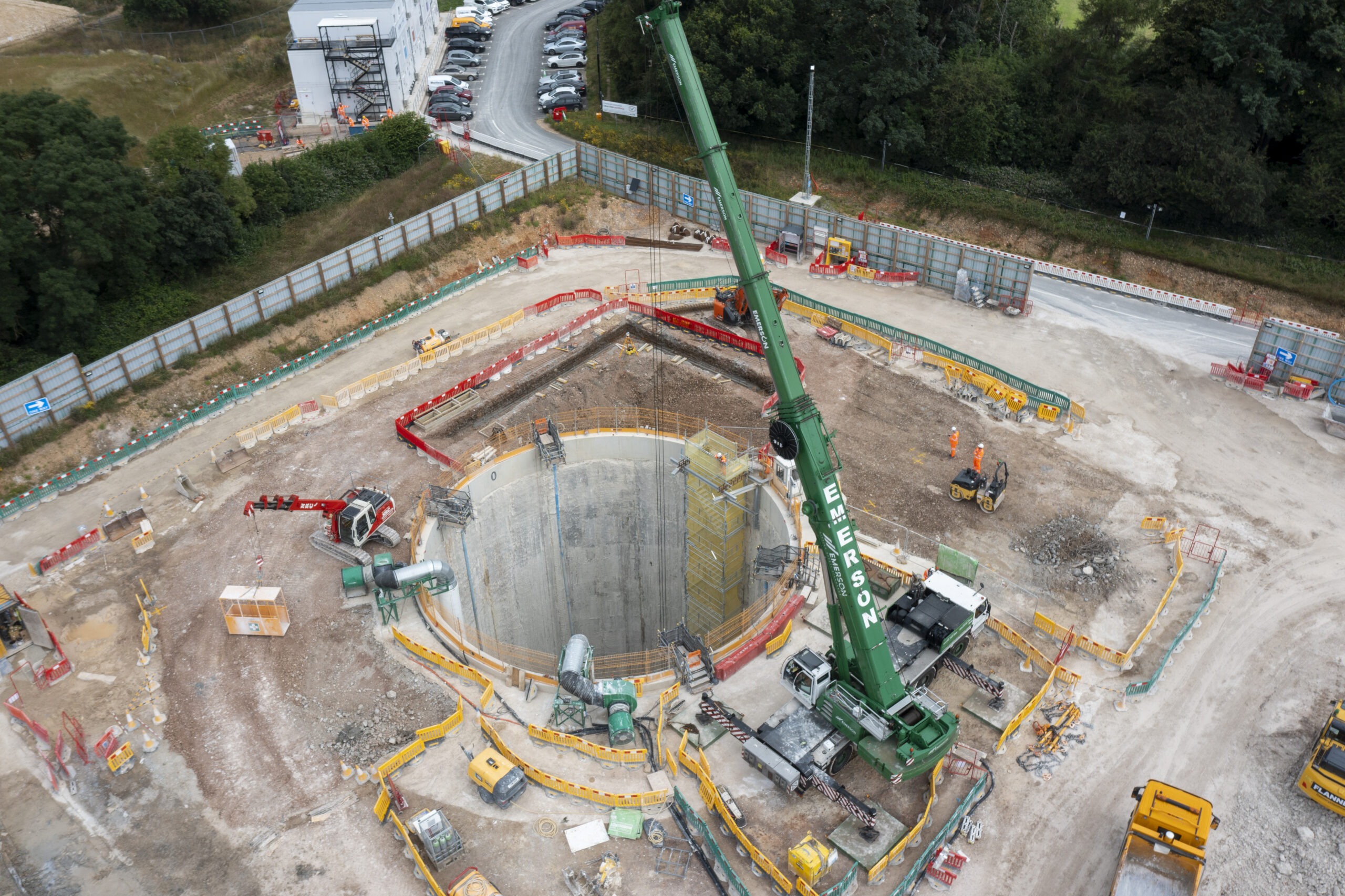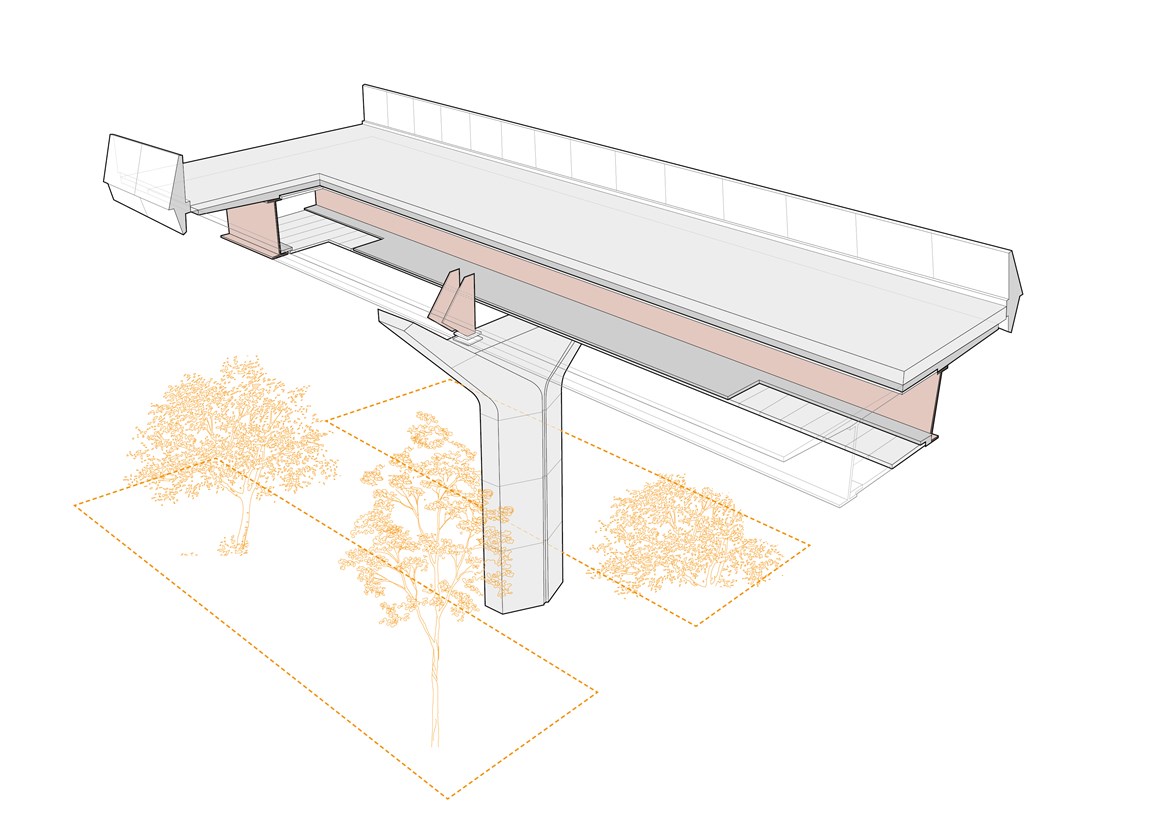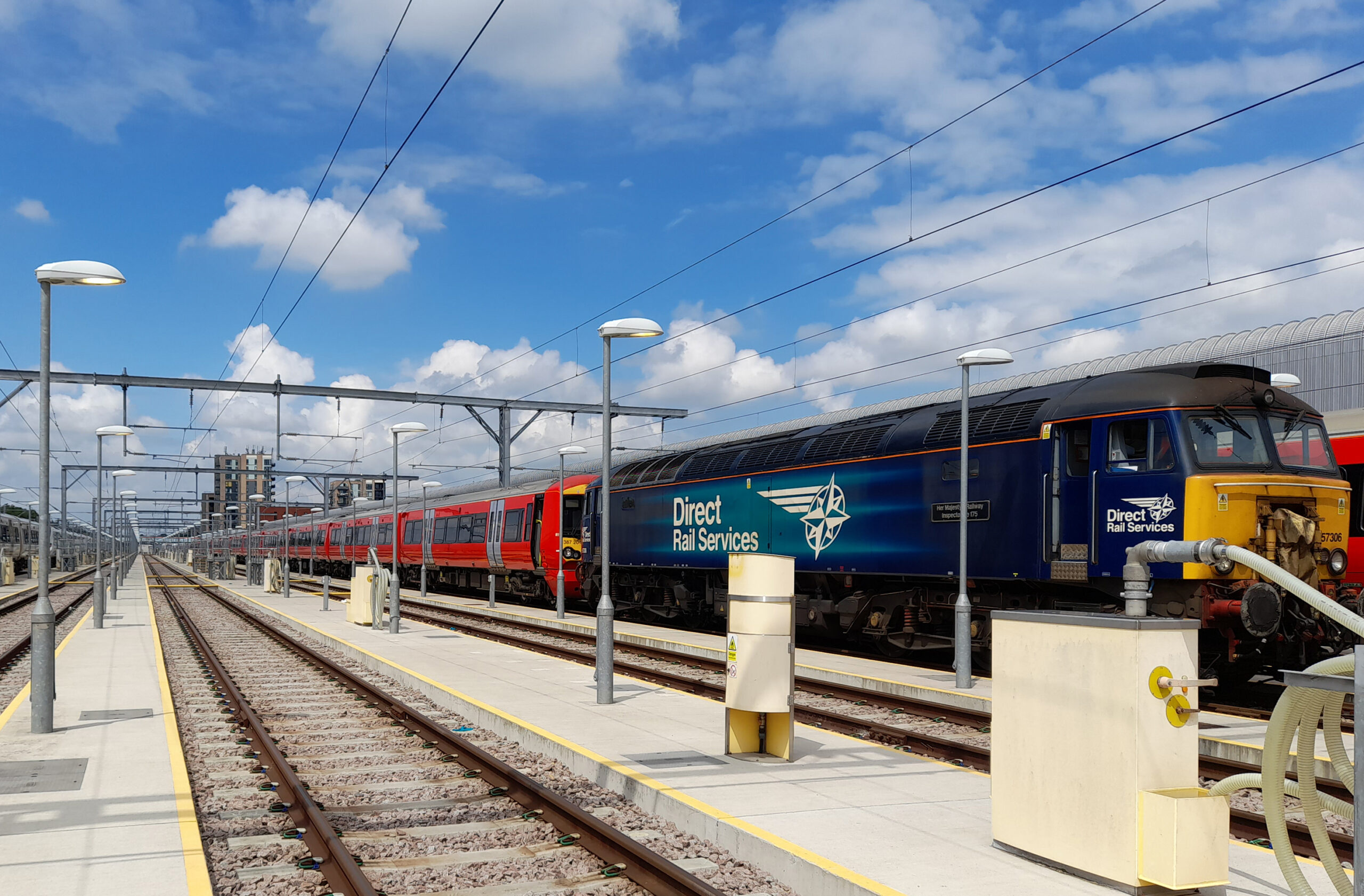After the launch of the first two tunnel boring machines, work has now begun on excavating the first of five Chiltern tunnel vent shafts.
Located at Chalfont St Peter, it will provide both ventilation and emergency access to the 10-mile twin tunnels. The shaft will be 78m deep and covered with a barn-style headhouse that achieved planning approval in January this year.
The shaft will be fitted with fans and other equipment to control air quality and temperature, remove smoke in the event of fire and provide an access route for emergency services.

Excavation Process
To create the shaft, engineers used a 120-ton drilling rig with a specialist cutting head that excavated the walls of the shaft. Concrete was then poured in to create the 16 wall panels. With them in place, the team is now in the process of excavating the chalk from inside the shaft – 18,000 cubic metres that will be used to landscape the site after the completion of construction.
The two tunnel boring machines should reach the shaft in 2022, fully completing the tunnel excavation in three years’ time. After the tunnel boring machines have moved past the base of the shaft, the team will construct the vent shaft’s internal structures and basement works and install the equipment.
Rohan Perin, Project Client Director, HS2 Ltd, said:The excavation at Chalfont St Peter shows how much progress we have already made in delivering the Chiltern tunnels. Topped with a headhouse inspired by the style of local barns and agricultural buildings, the shaft is one of the few elements of the tunnel which will be visible above ground level and shows just how seriously we are taking our responsibility to protect the landscape and natural environment.
To facilitate the construction works at Chalfont St Peter, a temporary access road connecting the site to the A413 was built to avoid construction traffic having to travel through the centre of the village. A new temporary marshalled lorry holding area was also set up on the A-road.

























